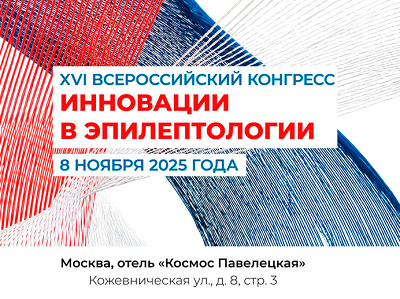An impact of the EpiTapp® application on the quality of life of patients with drug-resistant structural focal epilepsy
https://doi.org/10.17749/2077-8333/epi.par.con.2023.151
Abstract
Background. One of the main goals of rehabilitation programs is to improve the quality of life (QoL) of patients with various chronic diseases, including epilepsy. However, the issues of rehabilitation of adult patients with drug-resistant epilepsy remain not fully resolved.
Objective: to evaluate an impact of the author-proposed EpiTapp® method on QoL of patients with drug-resistant structural focal epilepsy (SFE).
Material and methods. The study involved 60 patients with drug-resistant SFE: main group – 30 patients (median age
33.5 years) with drug-resistant SFE who along with antiepileptic therapy regularly used the wrist tapping EpiTapp® method as an element of emergency self-help upon appearance of the first signs of arising epileptic seizure; control group – 30 patients (median age 39.5 years) with drug-resistant SFE who used no EpiTapp® method, but continued to receive previously selected antiepileptic therapy. QoL was assessed by the questionnaire approach using author-translated Quality of Life in Epilepsy Inventory (QOLIE-31).
Results. While comparing QoL of two patient groups over a 6-month follow-up period, a significant (p<0.05) positive parameter dynamics was demonstrated only in main group but not in control group.
Conclusion. The author-based EpiTapp® technique improves QoL of patients with drug-resistant SFE and can be used as an additional method of rehabilitation.
About the Authors
E. А. NarodovaRussian Federation
Ekaterina A. Narodova – MD, PhD, Associate Professor, Chair of Neurological Diseases with Postgraduate Education Course
WoS ResearcherID: AAM-9051-2020; Scopus Author ID: 57203353014
1 Partizan Zheleznyak Str., Krasnoyarsk 660022
N. A. Shnayder
Russian Federation
Natalia A. Shnayder – Dr. Med. Sc., Professor, Leading Researcher, Center of Collective Usage “Molecular and Cellular Technologies”; Deputy Head of Department of Personalized Psychiatry and Neurology
WoS ResearcherID: M-7084-2014
1 Partizan Zheleznyak Str., Krasnoyarsk 660022
3 Bekhterev Str., Saint Petersburg 192019
Е. Е. Erakhtin
Russian Federation
Evgeniy Е. Erakhtin – Neurosurgeon
17 Kurchatov Str., Krasnoyarsk 660062
V. V. Narodova
Russian Federation
Valiria V. Narodova – Dr. Med. Sc., Professor, Chair of Neurological Diseases with Postgraduate Education Course
1 Partizan Zheleznyak Str., Krasnoyarsk 660022
References
1. Baxendale S. Cognitive rehabilitation and prehabilitation in people with epilepsy. Epilepsy Behav. 2020; 106: 107027. https://doi.org/10.1016/j.yebeh.2020.107027.
2. Karlov V.A. Evolution of L.R. Zenkov. Epilepsy as a model for studying the CNS function. Epilepsia i paroksizmalʹnye sostoania / Epilepsy and Paroxysmal Conditions. 2018; 10 (3): 79–86 (in Russ.).
3. Tokareva N.G., Shtyrov E.M., Samakaeva R.Sh. Anxiety and depression as a manifestations of concomitant mental disorders in patients with epilepsy. Modern Problems of Science and Education. 2022; 3: 145 (in Russ.). https://doi.org/10.17513/spno.31726.
4. Zinchuk M.S., Kustov G.V., Pashnin E.V., et al. Screening for anxiety and depressive disorders in epilepsy: current state of the art. Russian Journal of Psychiatry. 2021; 3: 87–97 (in Russ.). https://doi.org/10.47877/1560-957X-2021-10309.
5. Marks W.A., Hernandez A., Gabriel M. Epilepsy: habilitation and rehabilitation. Semin Pediatr Neurol. 2003; 10 (2): 151–8. https://doi.org/10.1016/s1071-9091(03)00023-8.
6. Sihvonen A.J., Särkämö T., Leo V., et al. Music-based interventions in neurological rehabilitation. Lancet Neurol. 2017; 16 (8): 648–60. https://doi.org/10.1016/S1474-4422(17)30168-0.
7. Clinical guidelines “Epilepsy and epileptic status in adults and children”. 2022. Avaulable at: https://cr.minzdrav.gov.ru/recomend/741_1 (in Russ.) (accessed 05.03.2023).
8. Cavalcante B.R.R., Improta-Caria A.C., Melo V.H., De Sousa R.A.L. Exercise-linked consequences on epilepsy. Epilepsy Behav. 2021; 121 (Pt. A): 108079. https://doi.org/10.1016/j.yebeh.2021.108079.
9. Petrov K.V., Mozheyko E.Yu., Shnayder N.A., et al. Applying the International Classification of Functioning, Disability and Health in establishing a rehabilitation diagnosis for patients with juvenile myoclonic epilepsy. Epilepsia i paroksizmalʹnye sostoania / Epilepsy and Paroxysmal Conditions. 2021; 13 (3): 237–48 (in Russ.). https://doi.org/10.17749/2077-8333/epi.par.con.2021.071.
10. Wedlund E.W., Nilsson L., Tomson T., Erdner A. What is important in rehabilitation for persons with epilepsy? Experiences from focus group interviews with patients and staff. Epilepsy Behav. 2013; 28 (3): 347–53. https://doi.org/10.1016/j.yebeh.2013.05.022.
11. Narodova E.A., Rudnev V.A., Shnayder N.A., et al. Parameters of the wrist tapping using a modification of the original method (method of exogenous rhythmic stimulation influence on an individual human rhythm). Int J Biomed. 2018; 8 (2): 155–8. https://doi.org/10.21103/Article8(2)_OA10.
12. Narodova E.A., Shnayder N.A., Karnaukhov V.E., Narodova V.V. Experience of using EpiTapp application in structural focal epilepsy. Epilepsia i paroksizmalʹnye sostoania / Epilepsy and Paroxysmal Conditions. 2021; 13 (4): 367–76 (in Russ.). https://doi.org/10.17749/2077-8333/epi.par.con.2021.066.
13. Zenkov L.R. How to improve the treatment of epilepsy in Russia. Russian Medical Journal. 2003; 1: 3–9 (in Russ.).
14. Karlov V.A. Epilepsy in children and adult women and men. A guide for doctors. 1st ed. Мoscow: Meditsina; 2010: 720 pp. (in Russ.).
15. Specchio N., Curatolo P. Developmental and epileptic encephalopathies: what we do and do not know. Brain. 2021; 144 (1): 32–43. https://doi.org/10.1093/brain/awaa371.
16. Mizuguchi M., Ohsawa M., Kashii H., Sato A. Brain symptoms of tuberous sclerosis complex: pathogenesis and treatment. Int J Mol Sci. 2021; 22 (13): 6677. https://doi.org/10.3390/ijms22136677.
Review
For citations:
Narodova E.А., Shnayder N.A., Erakhtin Е.Е., Narodova V.V. An impact of the EpiTapp® application on the quality of life of patients with drug-resistant structural focal epilepsy. Epilepsy and paroxysmal conditions. 2023;15(2):92-106. (In Russ.) https://doi.org/10.17749/2077-8333/epi.par.con.2023.151

This work is licensed under a Creative Commons Attribution-NonCommercial-ShareAlike 4.0 International License.











































